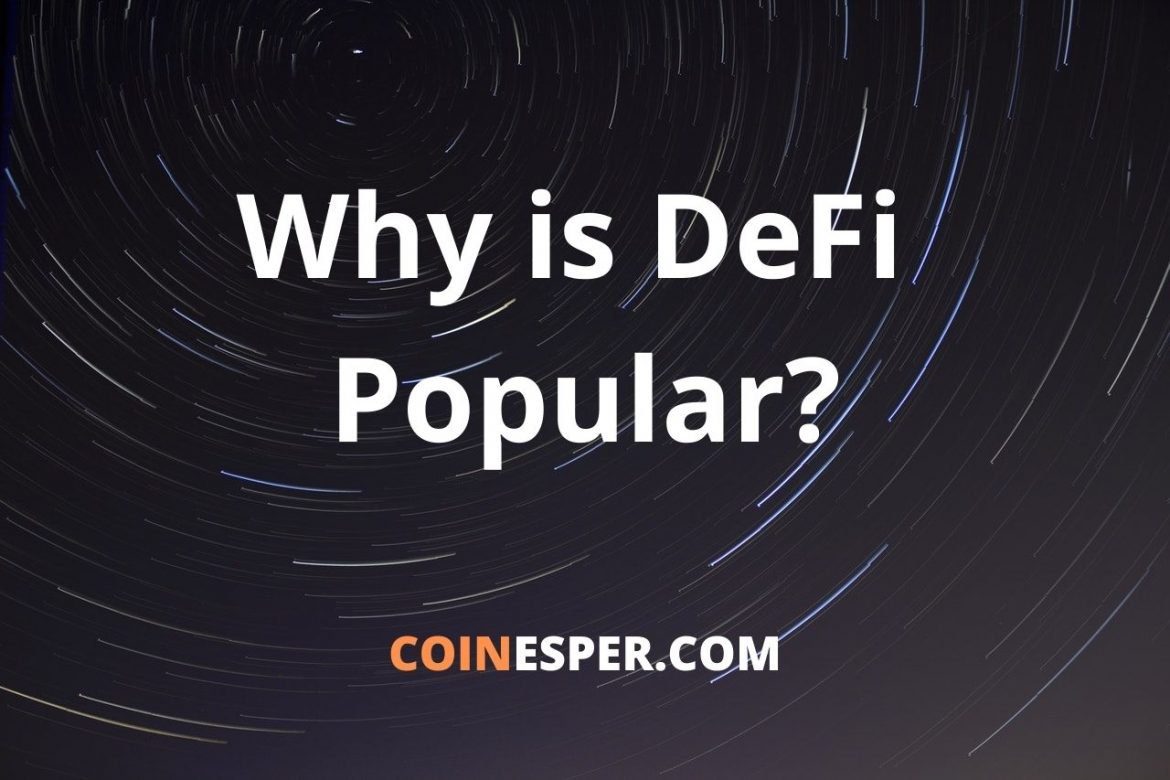DeFi or Decentralized Finance has the potential to open money payments up to anyone, everywhere. Find out why DeFi has become so popular and where it may be heading.
Contents
Cryptocurrency opens financial systems
Cryptocurrency’s central philosophy has historically been to make money and payments universally accessible. Thanks to the invention of Satoshi Nakamoto, Bitcoin, the decentralization of trust was possible for the first time.
DeFi builds on the decentralization of trust model. DeFi seeks to make every financial service you use today accessible to anyone in the world with an internet connection.
Smart contract blockchains like Ethereum are making this possible.
What’s a smart contract?
A smart contract is a self-executing contract. The terms of the agreement between the parties are written into lines of digital code.
The code exists across a distributed, decentralized blockchain network. It controls execution. Transactions are trackable and irreversible.
Smart contracts permit trusted transactions and agreements to be executed between anonymous parties. There is no requirement for a centralised authority or legal system.
These programs are what we call decentralized apps, or dapps.
The growth of dapps and DeFi
A dapp is an app that is built on decentralized technology. This is opposed to it being than built and controlled by a centralized entity or company.
Through these dapps you can lend digital assets, earn interest on your digital assets, take out a loan and exchange cryptocurrencies.
What are the differences between DeFi dapps and traditional banks?
Traditional financial institutions are controlled by a centralized governing body. However, dapps run on smart contracts, which means they run without any human intervention (theoretically free from human corruption).
Since the program is built on the public blockchain, the code is open for everyone to see and is therefore transparent. Contrast this to traditional financial institutions, which are well-cited to have non-transparent practices. For example, when your money goes into bank do you really know where it goes and what it is used for?
A public blockchain is ‘permissionless’. The ecosystem has no guardians or gatekeepers adjudicating who gets to create dapps and who doesn’t.
DeFi is currently one of the fastest developing sectors in crypto sphere.
Popular dapps that are live today
Let’s take a look at some popular dapps in the DeFi space.
Stablecoin and Decentralized Reserve Bank: MakerDAO
MakerDAO is a decentralized organization built on Ethereum. It allows lending and borrowing of cryptocurrencies without the need for a middle man.
MakerDAO is comprised of a smart contract service that manages borrowing and lending. It has two currencies: DAI and MKR to regulate the value of loans.
Borrow and Lend: Compound
Compound is a decentralized, blockchain-based protocol. It allows users to lend and borrow cryptocurrencies. COMP is its native utility token that gives you power in governing the protocol.
Compound removes the time, effort and cost of dealing with a traditional financial intermediary.
Automated Token Exchange: Uniswap
Uniswap is a set of computer programs that allow decentralized swapping of ERC20 tokens. It runs on the Ethereum blockchain.
Traders can exchange Ethereum tokens on Uniswap without having to trust a centralized third party with their funds.
Additionally, anyone can lend their crypto to special reserves called liquidity pools. In exchange for providing assets to these pools, they earn fees.
Prediction Markets: Augur
On top of the Ethereum network, Augur is a platform that incentivizes a global network of computers to maintain a prediction market platform .
A prediction market is not too dissimilar to an exchange. Instead of trading assets, users wager on the outcome of events.
With Augur, users can create and exchange “shares” representing a portion of the value of outcomes – all carried out without the need of a trusting a company to control these markets.
So what’s next for DeFi?
DeFi is a significant step forward for democratizing access to financial products.
At the same time, most protocols carry a considerable risk.
High up on that risk list are unaudited and compromised smart contracts.
There have been many exploitations such as flash loan and arbitrage attacks that have resulted in the loss of funds. Several DeFi platforms have been affected including bZx, Bancor, dForce, Yam Finance and Balancer.
Scam projects and pump and dump schemes, or ‘rug pulls’, also became common in the midst of the DeFi hype whereby token prices get pumped up only to dump a few hours later.
Like any new technology, there is a process that needs to occur to move toward maturity. Barriers that exist preventing a safe environment for investors, in particular, require removing. These barriers may include legal and regulatory frameworks. A lack of regulation and KYC/AML procedures creates a high risk of money laundering through liquidity pools. DeFi, without doubt, will feature on the radar of regulators rather like Initial Coin Offerings did in 2017.
DeFi closing thoughts
DeFi is building financial services separate from the traditional financial and traditional political system. This has the potential to create a more open financial world system.
Like all fledging technologies, DeFi is not without its challenges.
If successful, DeFi will remove power from centralized organizations and put it in the hands of the open-source communities. The DeFi story is one to watch with interest.


